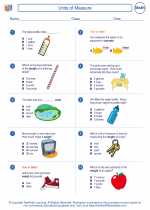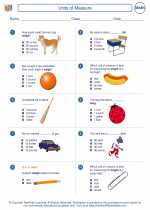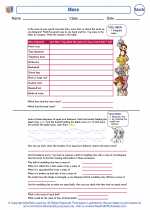Quantity in Math
In mathematics, quantity refers to the amount or number of things being considered. It is a fundamental concept that is used to measure, compare, and perform operations on numbers and objects. Understanding quantity is essential for solving mathematical problems and making sense of the world around us.
Measuring Quantity
Quantities can be measured using different units, such as numbers, objects, length, weight, volume, and time. For example, a quantity of apples can be measured in terms of the number of apples, a length of fabric can be measured in meters, and a duration of time can be measured in minutes or hours.
Comparing Quantity
Quantities can be compared to determine which is greater, smaller, or equal. In mathematics, comparison symbols (<, >, and =) are used to show the relationship between two quantities. For example, 5 is greater than 3, so we write 5 > 3.
Operations on Quantity
Basic arithmetic operations such as addition, subtraction, multiplication, and division are used to perform operations on quantities. These operations allow us to combine, separate, equalize, or distribute quantities. For example, if we have 3 apples and we buy 2 more, the total quantity of apples becomes 3 + 2 = 5.
Representation of Quantity
Quantities can be represented using numerals, symbols, and words. For instance, the quantity of 10 can be represented as "10," "ten," or "X" in Roman numerals. Understanding how to represent quantities in different ways is important for effective communication and problem-solving.
Real-World Applications
Understanding quantity is crucial in everyday life, as it is used in various real-world scenarios such as shopping, cooking, building, and time management. Being able to quantify and manipulate quantities is essential for making informed decisions and solving practical problems.
Overall, the concept of quantity is a foundational building block in mathematics and is essential for understanding and interacting with the world in a meaningful way.
.◂Math Worksheets and Study Guides Third Grade. Units of Measure

 Worksheet/Answer key
Worksheet/Answer key
 Worksheet/Answer key
Worksheet/Answer key
 Worksheet/Answer key
Worksheet/Answer key
 Worksheet/Answer key
Worksheet/Answer key
